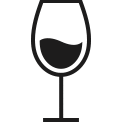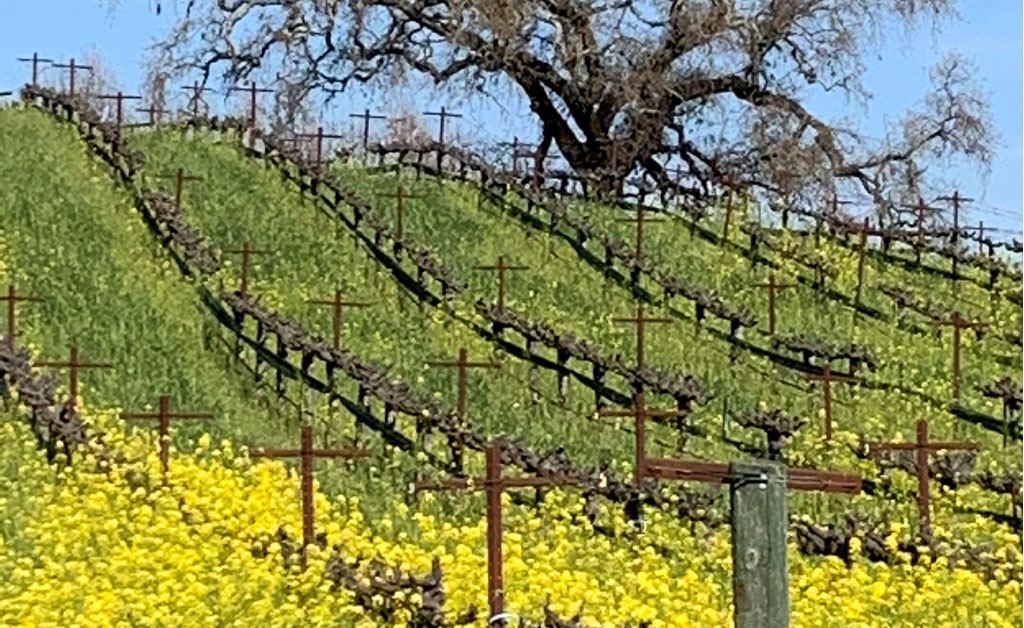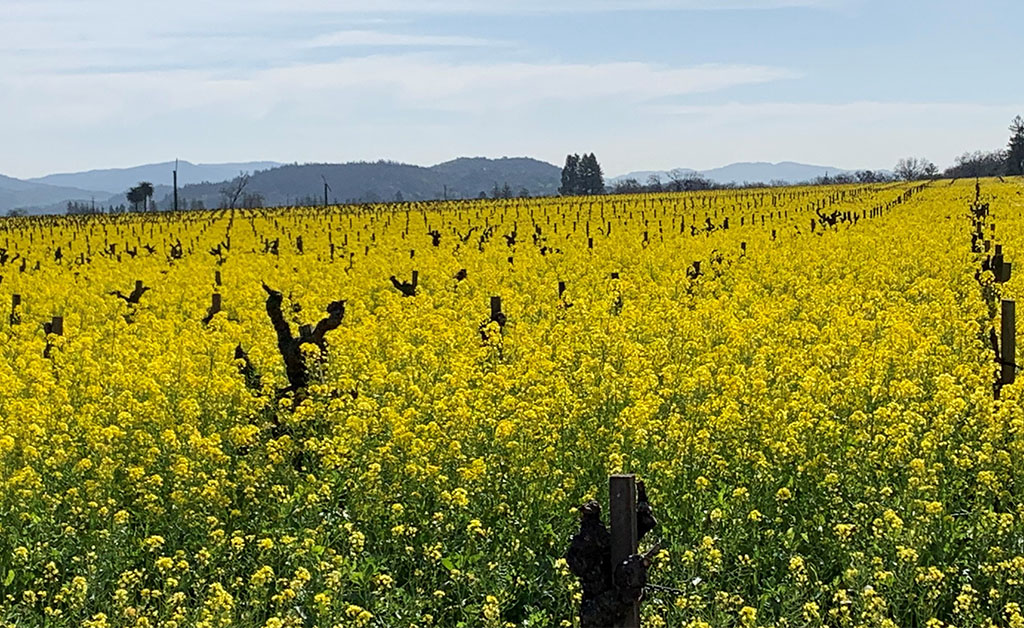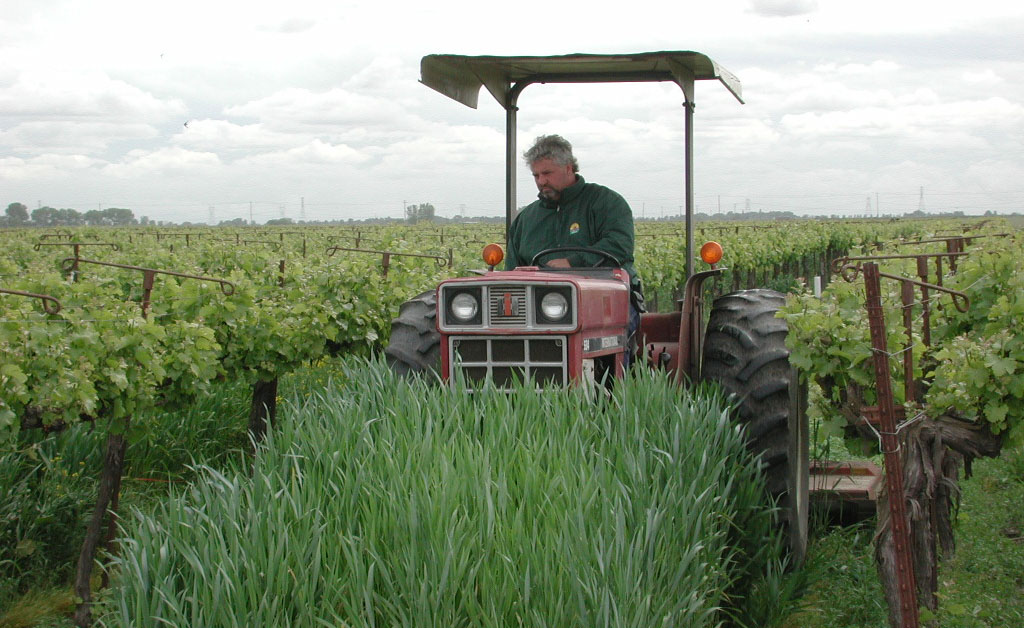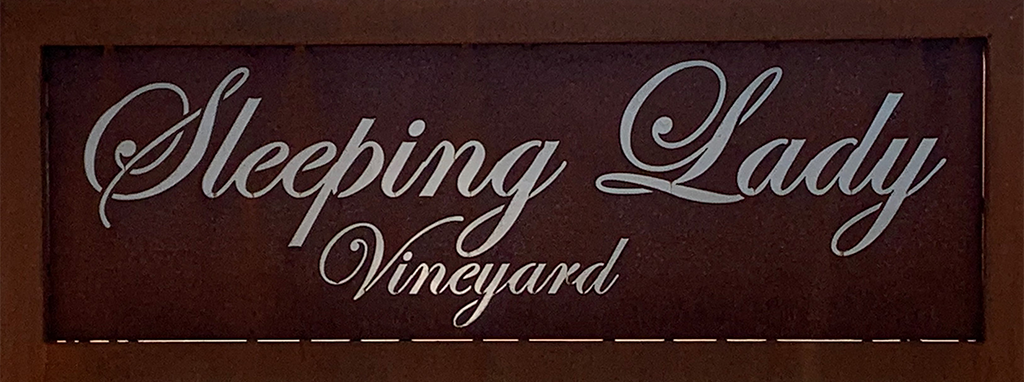Sleeping Lady of the Vineyards
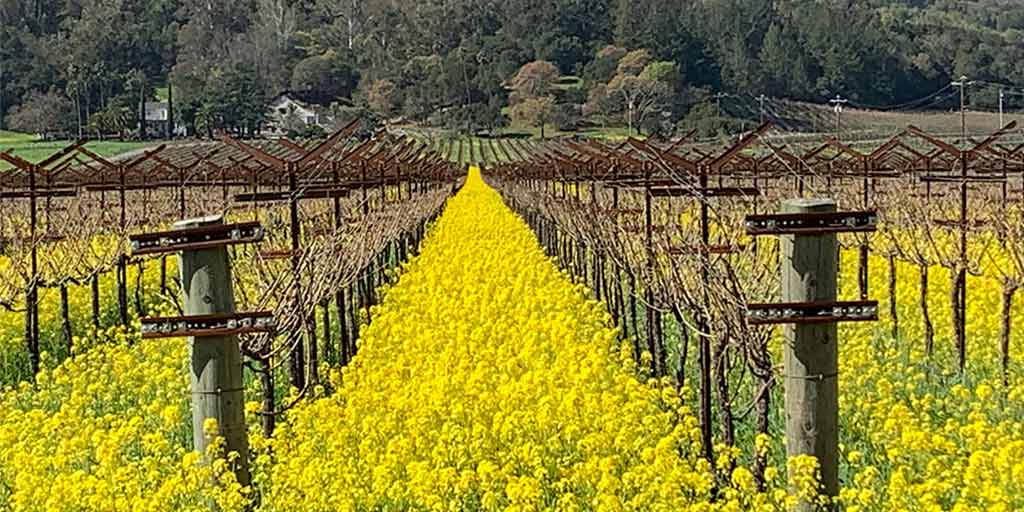
The two pictures below were taken at the very beginning of March. Well, let us play a little game, shall we? What do they have in common?
If your answer was: They are from the Napa Valley, have Cabernet Sauvignon vines and the exposure of the rows is West-East—you are correct on all counts.
Of course, I want to bring your attention to the pretty yellow color that blankets this beautiful valley. Our “Sleeping Lady” the mustard, has awakened in the vineyards. She is blooming in Saint Helena, Calistoga, Rutherford, Oakville, all around Napa Valley and many vineyards in California.
This is pruning time in our valleys. Everything is dormant except cover-crops which are in overdrive at this time of the year receiving a few inches of precious rain.
While a vineyard manager can choose from scores of different choices for cover-cropping, some vineyards just go with a volunteer cover crop, which naturally grows when winter begins and water is abundant. The most famous volunteer cover crops in wine country is the mustard.
There is no need to replant mustard. Each plant produces an enormous quantity of mustard seed. If we were to remove the plants that grow each year before they seed, there is something like 40 years’ worth of seeds in the ground waiting for their chance to grow.
Those fantastic fields of color are used by our winegrowers to provide and enrich the vines in organic matter during the upcoming growing cycle. Cultivating certain types of plants in between crops is not new anywhere in the world. Raising and maintaining the quality of your soil with more Nitrogen, Phosphorus and Potassium (NPK) is primordial. If it works in Iowa, Texas, Tennessee, Kentucky or Kansas, it certainly works as well for grape growing. This green approach of no-till operations prevents soil erosion and encourages root growth.
Often, seeds are intentionally planted to grow at this time. There may be a tendency to think of a vineyard as a monoculture: a field where only one plant is grown.
Good viticulture, however, will employ the planting and growth of many other crops for a variety of purposes. Vines are producing better grapes when the soil is well maintained. Those cover crops help with drainage against excess moisture. Also those flowers provide an essential habitat for beneficial insects that keep the population of other insects and the pressure of many diseases in check. Each mix is planted at a rate of 100 lbs per acre. These plants can include legumes such as fava beans, bell beans or clover, all of which benefit from a symbiotic relationship with Nitrogen-fixing bacteria. When we till the plants into the soil, they decompose and deliver Nitrogen in a useable form to the grapevines.
We also plant grains such as rye grasses or oats. These mainly carbon-containing plants benefit the vineyard by increasing soil tilth, or structure/looseness and aeration. Often a blend of cereals and legumes is employed to get the benefit of both properties.
Vineyard cover crops also draw down the abundant moisture in the soil resulting from heavy winter rains. High-quality grapes require restricted access to water in the time between bloom and veraison. We choose well-drained soils for this reason, and we use cover crops to assist where drainage is poor. In California, we receive nearly all of our annual precipitation between the months of November and May. Cover crops can help to use up some of that water.
A final and extremely important reason for cover crops involves the flowers they produce. Many beneficial insects are attracted to flowers. These beneficials are important for vine health, as they predate on invasive species like mites, mealybugs and other insects damaging to the primary crop. Plants that are especially good at attracting beneficials are buckwheat, alyssum and crimson clover.
The Napa Valley mustard might not be as famous as the condiment from Dijon in France but the presence of mustard in our vineyards at this time of the year is a gauge of health and prosperity for our grape growers.
Next year, this Sleeping Lady will be ready to show off her yellow gown once again.
*WineShop At Home is not associated with Sleeping Lady Vineyard. We just love their name!
